Have you ever wondered why so many people love the ketogenic diet? Could it really help you lose weight and improve your metabolic health? This keto diet meal plan is more than just for losing pounds. It’s about improving your overall health and well-being.
In this article, you’ll learn how the ketogenic diet works. It’s all about eating fewer carbs and more fats. You’ll see how it can change your body and mind. We’ll cover essential foods, meal prep ideas, and how to track your progress.
Introduction to the Keto Diet
The keto diet focuses on eating less carbs and more fats. It was first used to help with epilepsy and diabetes. Now, it’s popular for weight loss.
This diet works by making your body burn fat instead of carbs. Getting into ketosis can lead to better weight loss. It’s not just about cutting carbs. It’s about choosing good fats and proteins for health and weight loss.
Understanding the Science Behind Ketosis
Ketosis is a metabolic state where your body uses fat instead of carbs for energy. This happens when you eat fewer carbs. Your body then uses fat for fuel, making ketone bodies. These serve as an energy source for your brain and muscles.
When you don’t have enough glucose, your body breaks down fat. This is how ketosis works. You might see mild ketosis when fasting or exercising a lot. But a ketogenic diet makes this process stronger, helping you burn more fat.
Knowing how ketosis works can help you on your path to better health and weight control. It’s all about how your body uses energy.
What Is a Keto Diet Meal Plan?
A ketogenic meal plan focuses on a specific mix of macronutrients. This mix helps your body enter ketosis, where it burns fat for energy instead of carbs. By sticking to these ratios, you can lose weight and boost your metabolic health.
Defining the Macronutrient Ratios
The keto diet’s macronutrient ratios are 70-80% fats, 10-20% protein, and 5-10% carbs. This is different from most diets, which focus more on carbs. By eating more fats, you fuel your body effectively for weight loss.
How the Keto Diet Differs from Other Diets
Compared to other diets, the keto diet is unique. It emphasizes eating a lot of fats and very few carbs. This approach helps you lose weight and keeps your insulin levels low, improving your metabolic health.
| Diet Type | Macronutrient Ratios | Focus |
|---|---|---|
| Keto Diet | 70-80% Fats, 10-20% Protein, 5-10% Carbs | Fat burning |
| Standard Diet | 45-60% Carbs, 10-35% Protein, 20-35% Fats | Balanced nutrition |
| Paleo Diet | 30-40% Carbs, 25-35% Protein, 30-40% Fats | Whole food principles |
Benefits of Following a Keto Diet for Weight Loss
The keto diet has many benefits, like helping with weight loss and improving metabolic health. Many people see big changes in their bodies. Knowing these benefits can keep you motivated and informed about your health choices.
Short-term Weight Loss Results
Research shows quick weight loss for those on the keto diet. The body starts burning fat for energy, leading to fast weight loss. This can make you want to keep going with the diet.
You might also eat less because of ketosis. This helps you lose more weight.
Impact on Metabolic Health
The keto diet also improves metabolic health. Studies show better insulin sensitivity, which helps keep blood sugar stable. It can also lower blood pressure and improve lipid profiles.
These changes reduce the risk of chronic diseases. It shows the diet’s role in improving overall wellness while you work on weight loss.
How to Create a Personalized Keto Meal Plan
Creating a personalized keto meal plan is key to reaching your diet and health goals. It’s important to assess your nutritional needs carefully. Your age, gender, weight, height, activity level, and weight goals all matter. They help shape a meal plan that suits you best.
Assessing Your Nutritional Needs
First, examine your current diet and nutritional needs. These should match your lifestyle and preferences. Collect data on:
- Your daily caloric intake
- Any food allergies that might limit your choices
- Your meal complexity and budget preferences
Your personal profile is vital in creating a keto meal plan that suits you. It ensures your meals align with your goals and are enjoyable. For more detailed tools, visit nutritional planners made for keto diets.
Tailoring Macros to Individual Goals
After understanding your nutritional needs, focus on macro tailoring. A keto diet mainly includes fats, proteins, and carbs. The ideal ratio varies, but typically, it’s 70% fats, 25% proteins, and 5% carbs. For instance:
| Macronutrient | Percentage | Calories from Macronutrient |
|---|---|---|
| Fats | 70% | 1400 Kcal |
| Proteins | 25% | 500 Kcal |
| Carbohydrates | 5% | 100 Kcal |
Adjusting these ratios based on your needs and goals makes your diet effective and enjoyable. A personalized keto meal plan helps you meet your nutritional targets and promotes healthier habits.
Keto Diet Meal Plan: Essential Foods to Include
To make a good keto diet meal plan, pick foods that give you energy and make you feel full. Include healthy fats, quality proteins, and low-carb veggies. This will help you get the most from your diet.
Healthy Fats to Incorporate
Healthy fats are key in a keto diet. They give you energy and help keep you healthy. Some top choices are:
- Avocado
- Olive oil
- Fatty fish like salmon
- Coconut oil
- Nuts and seeds
Best Proteins on a Keto Diet
Choose high-quality proteins for your keto diet. Good options include:
- Grass-fed beef
- Pastured poultry
- Free-range eggs
- Pork, mainly fatty cuts
- Plant-based proteins like tofu and tempeh
Low-Carb Vegetables and Their Benefits
Low-carb veggies are vital for vitamins, minerals, and fiber. They help keep carbs low. Leafy greens and cruciferous veggies are great. They aid digestion and boost health.
| Food Type | Examples | Benefits |
|---|---|---|
| Healthy Fats | Avocado, Olive Oil, Fatty Fish | Energy source, Anti-inflammatory |
| Proteins | Grass-fed Beef, Free-range Eggs | Muscle Maintenance, Nutrient-rich |
| Low-Carb Vegetables | Spinach, Broccoli | High in Fiber, Rich in Vitamins |

Delicious and Easy Keto Meal Prep Ideas
Meal prepping is key to staying on track with your keto diet. It helps you have healthy options ready, making it easier to reach your goals. Here are some great keto meal prep ideas for quick breakfasts, satisfying lunches, and tasty snacks.
Quick Breakfast Options
- Scrambled eggs with spinach and cheese, packed with healthy fats.
- Keto-friendly smoothies made with avocado, coconut milk, and a handful of berries.
- Chia seed pudding with almond milk and a sprinkle of cinnamon.
Lunch and Dinner Meal Ideas
- Salads topped with olive oil vinaigrette and grilled chicken or salmon.
- Stuffed bell peppers filled with ground turkey and cauliflower rice.
- Zucchini noodles tossed with pesto and sautéed shrimp.
Snacks and Treats for the Keto Diet
- Cheese sticks or cubes for a nutritious fat source.
- Olives or pickles, providing a satisfying crunch.
- A handful of nuts or seeds, perfect for on-the-go snacking.
Low Carb Meal Ideas for Beginners
Starting a keto diet is exciting. For beginners, simple and tasty low carb meals make it easier. Try omelets with your favorite toppings for breakfast. They’re satisfying and can be made just the way you like them.
Lunch can be a protein-packed salad with leafy greens, grilled chicken or salmon, and colorful veggies. This keeps your carb intake low while enjoying a fresh meal. For dinner, baked or stir-fried veggies with your choice of meat make for a healthy and tasty meal.
Adding keto-friendly recipes to your routine helps you find a rhythm. Explore beginner keto recipes that are easy to make and fun. Using whole ingredients keeps meals simple and keeps your diet exciting.
Here’s a list of quick and tasty low carb meal ideas to kickstart your ketogenic lifestyle:
- Egg White Omelet Bites
- Salmon Salad with Avocado
- Herbed Prime Rib Roast with riced cauliflower
- Grilled Chicken Breasts with asparagus
- Stuffed Portobello Pizza
- Zucchini “Noodle” Salad
Focus on easy meal plans and keep things varied to avoid boredom. Starting with these ideas can help you successfully follow the keto diet.
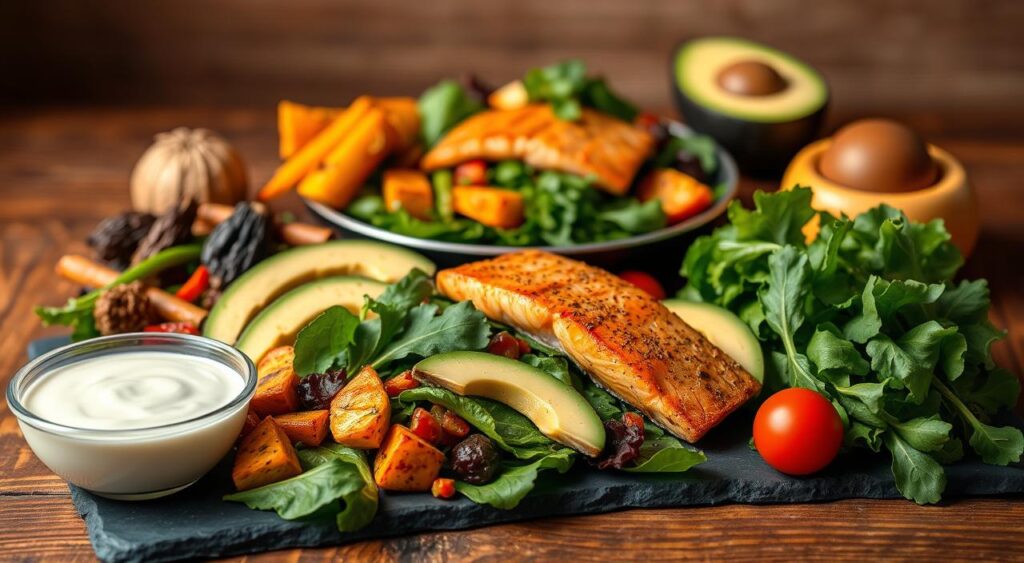
Keto Meal Planning Resources and Tools
Starting a ketogenic diet is easier with the right keto meal planning resources. There are many tools, apps, and cookbooks to help. They make tracking meals, finding new recipes, and planning meals easy. Using these resources can make your keto journey fun and lasting.
Apps and Websites for Meal Planning
Many ketogenic apps help with meal tracking, making it simple to keep an eye on macros. These apps give nutritional info and help plan meals based on your needs. Websites focused on keto offer recipe collections that spark creativity in the kitchen. This helps prevent meal boredom.
Cookbooks and Recipe Collections
Investing in keto-friendly cookbooks is a good idea. They offer a wide range of recipes, from quick meals to complex dishes. Exploring different recipe collections can lead to new favorites. This keeps your keto diet interesting and satisfying.
Potential Challenges and How to Overcome Them
Starting a keto diet comes with its own set of challenges, mainly for beginners. One big hurdle is the “keto flu,” which can cause various symptoms. Knowing how to handle these symptoms and eating out on keto can make your journey smoother and more successful.
The Keto Flu: Symptoms and Remedies
The keto flu is a common issue when you first start keto. It can make you feel tired, have headaches, feel irritable, and even nauseous. But, there are ways to overcome these keto challenges. Drinking lots of water is key, so make sure to drink water all day.
Eating foods high in electrolytes like avocados, leafy greens, and nuts can help too. Many people find that staying hydrated and taking supplements helps a lot in managing the keto flu.
Sticking to the Plan While Eating Out
Eating out on keto might seem hard, but there are ways to make it work. Opt for meals with lots of meat and low-carb veggies. This makes it easier to stick to your diet.
Look for grilled foods, salads, and sides that fit your diet. Avoiding bread and pasta keeps you on track without feeling left out. Being mindful of keto challenges when choosing what to eat out can help you stay committed to your diet.

The Research Supporting the Keto Diet
The keto diet has caught the eye of many, thanks to its success in weight loss and improving health. Studies have shown it can lead to quick weight loss. This makes it a popular choice for those wanting to feel better overall.
Studies on Weight Loss and Metabolic Health
Recent studies show the keto diet helps people lose fat fast. It works by lowering insulin levels, which helps burn fat and boosts metabolism. It also improves heart health by reducing bad fats and increasing good ones.
Long-term Effects and Sustainability
Can the keto diet be followed for a long time? This is a big question. While it works well short-term, its long-term benefits are less clear. Experts suggest moving to a balanced diet after losing weight for a healthier lifestyle. More research is needed to fully understand its long-term effects.
Common Misconceptions About the Keto Diet
The ketogenic diet is often misunderstood, which can stop people from trying it. Many think a high-fat diet is unhealthy. They believe it leads to weight gain and heart disease. But, research proves a keto diet can actually improve heart health by raising good cholesterol and stabilizing blood sugar.
Another myth is that the keto diet is boring and lacks flavor. But, it offers a wide range of tasty foods like avocados, fatty fish, and low-carb veggies. With a little creativity, you can enjoy many different meals while staying on track with your diet.
It’s important to know the truth about the keto diet. Some think ketosis is bad or can’t be done for long. But, studies show it can help with weight loss and improve metabolic health.

By understanding these myths, you can start the keto diet with confidence. This ensures you get the most health benefits from it.
How to Monitor Your Progress on a Keto Diet
Tracking your progress on the keto diet is key to reaching your health goals. By watching key indicators, you’ll see how your body reacts to diet changes. It’s vital to check your progress often and look at important health metrics. This helps you tweak your meal plan for lasting results.
Tracking Weight Loss and Health Metrics
There are many ways to track your weight loss and health. Here are some methods to consider:
- Weight scale: Weigh yourself weekly to see if you’re losing weight.
- Body measurements: Take your waist, hips, and other measurements to see fat loss, even if the scale doesn’t change.
- Blood tests: Check your blood glucose and ketone levels to make sure you’re in ketosis.
Adjusting Your Meal Plan as Needed
Being flexible with your meal plan can greatly help in reaching your weight loss goals. If you hit a plateau or gain weight unexpectedly, look at your calorie and macro intake. Here are some changes you might make:
| Adjustment Type | Description |
|---|---|
| Enhance Protein Intake | Up your protein sources to build muscle and feel full. |
| Modify Carb Sources | Lower high-carb foods and swap them for low-carb veggies. |
| Caloric Deficit | Check your calorie intake and make sure you’re in a deficit. |
Conclusion
Starting a keto diet can really help with weight loss and improve your health. Making smart food choices can lead to big changes. It’s not just about cutting carbs; it’s about living a healthy lifestyle with lots of fats and proteins.
When you try the keto diet, planning is key. Use tools and join groups for support. Keeping track of your progress helps you stay on track and make needed changes.
With hard work and the right plan, you can enjoy many benefits of the keto diet. You’ll see changes in your body and feel more energetic. This diet can lead to a healthier, happier life.

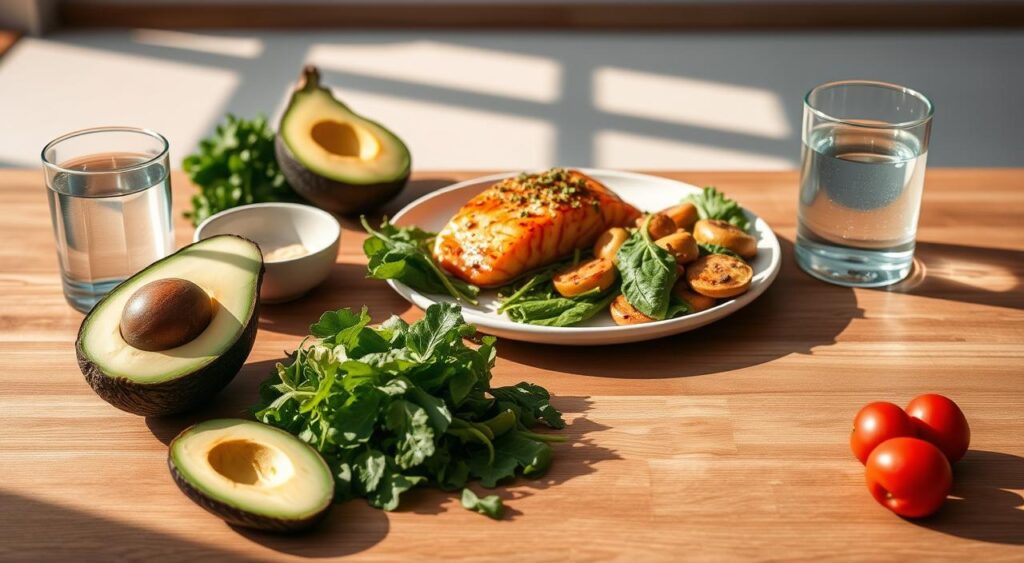









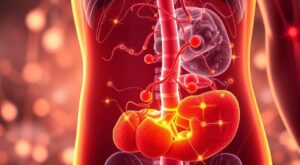
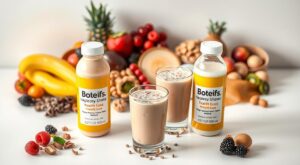
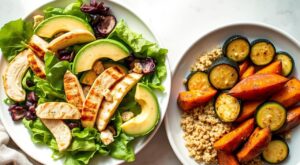

One Response